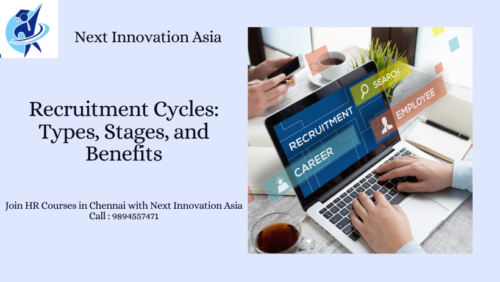Effective recruitment cycles are essential for attracting and hiring the best talent. Understanding the different types of recruitment cycles, their stages, and the benefits they offer can enhance your hiring process and improve overall organizational success.
Types of Recruitment Cycles
- Traditional Recruitment Cycle
- Description: This cycle follows a linear approach, starting from job posting to hiring.
- Process: Job advertising, application collection, screening, interviewing, selection, and hiring.
- Best For: Standard hiring needs with well-defined roles and clear candidate pipelines.
- Internal Recruitment Cycle
- Description: Focuses on filling positions from within the organization.
- Process: Identifying internal candidates, promoting from within, and internal job postings.
- Best For: Organizations aiming to leverage existing talent and foster career growth.
- External Recruitment Cycle
- Description: Involves attracting candidates from outside the organization.
- Process: Job advertising externally, using recruitment agencies, and job fairs.
- Best For: Filling new positions or roles requiring specialized skills not available internally.
- Talent Pool Recruitment Cycle
- Description: Maintains a database of potential candidates for future hiring needs.
- Process: Building and nurturing relationships with potential candidates, regular engagement, and targeted outreach.
- Best For: Organizations with ongoing hiring needs or rapid growth expectations.
Key Stages of Recruitment Cycles
- Job Analysis and Planning
- Define the role, responsibilities, and required qualifications.
- Develop a recruitment strategy and timeline.
- Job Posting and Sourcing
- Advertise the job through various channels (job boards, social media, etc.).
- Source candidates through internal and external networks.
- Application Screening
- Review applications to shortlist candidates based on qualifications and experience.
- Use automated tools or manual review methods to assess fit.
- Interviewing and Assessment
- Conduct interviews (phone, video, in-person) to evaluate candidates.
- Administer assessments or tests to gauge skills and cultural fit.
- Selection and Offer
- Choose the best candidate based on interview and assessment results.
- Extend a job offer and negotiate terms.
- Onboarding
- Integrate the new hire into the organization with training and orientation.
- Ensure smooth transition and set up for success.
Benefits of Effective Recruitment Cycles
- Improved Talent Acquisition
- Streamlined processes attract high-quality candidates and fill positions efficiently.
- Enhanced Candidate Experience
- A well-structured recruitment cycle provides a positive experience, improving employer branding.
- Reduced Time-to-Hire
- Efficient recruitment processes shorten the hiring timeline, minimizing disruptions and productivity loss.
- Cost Efficiency
- Reducing the time and resources spent on hiring lowers overall recruitment costs.
- Better Employee Retention
- Properly matched candidates are more likely to stay long-term, reducing turnover and associated costs.
- Strategic Workforce Planning
- A clear recruitment cycle supports long-term planning and aligns hiring with organizational goals.
By understanding and implementing effective recruitment cycles, organizations can enhance their hiring processes, attract top talent, and achieve better overall results in their recruitment efforts.
“Take your HR career to the next level with certified training and job support at Next Innovation Asia. Register now!”

